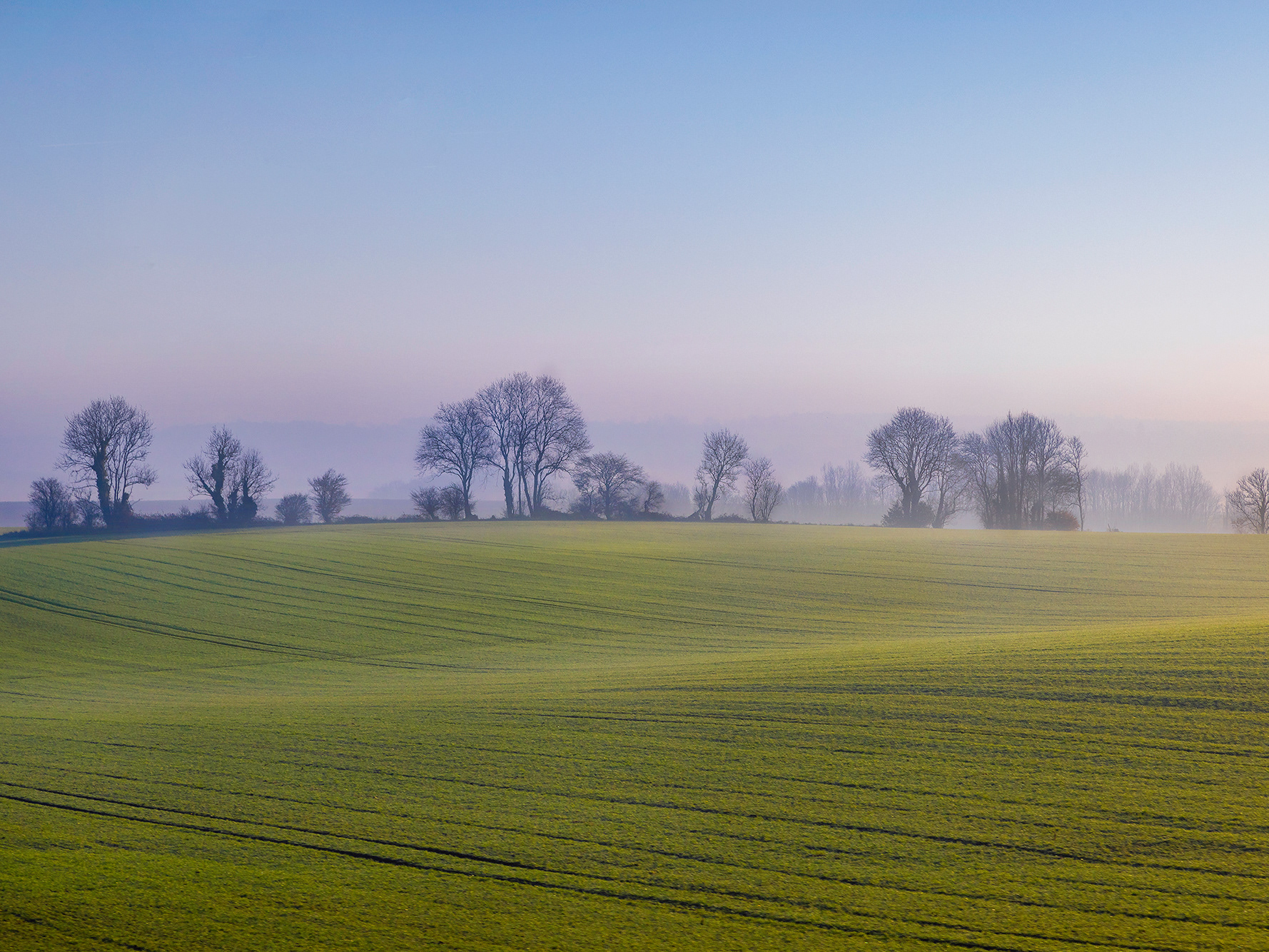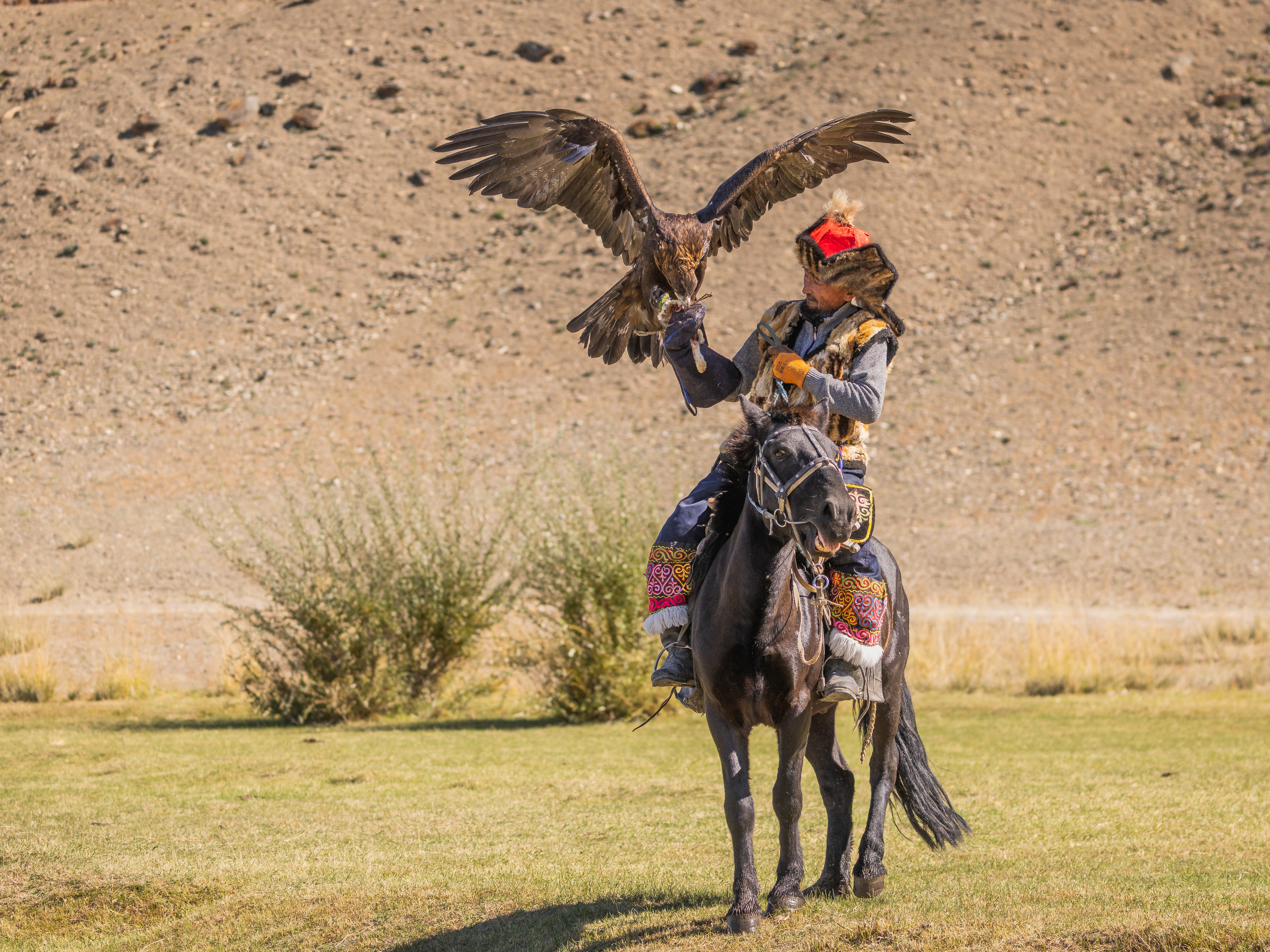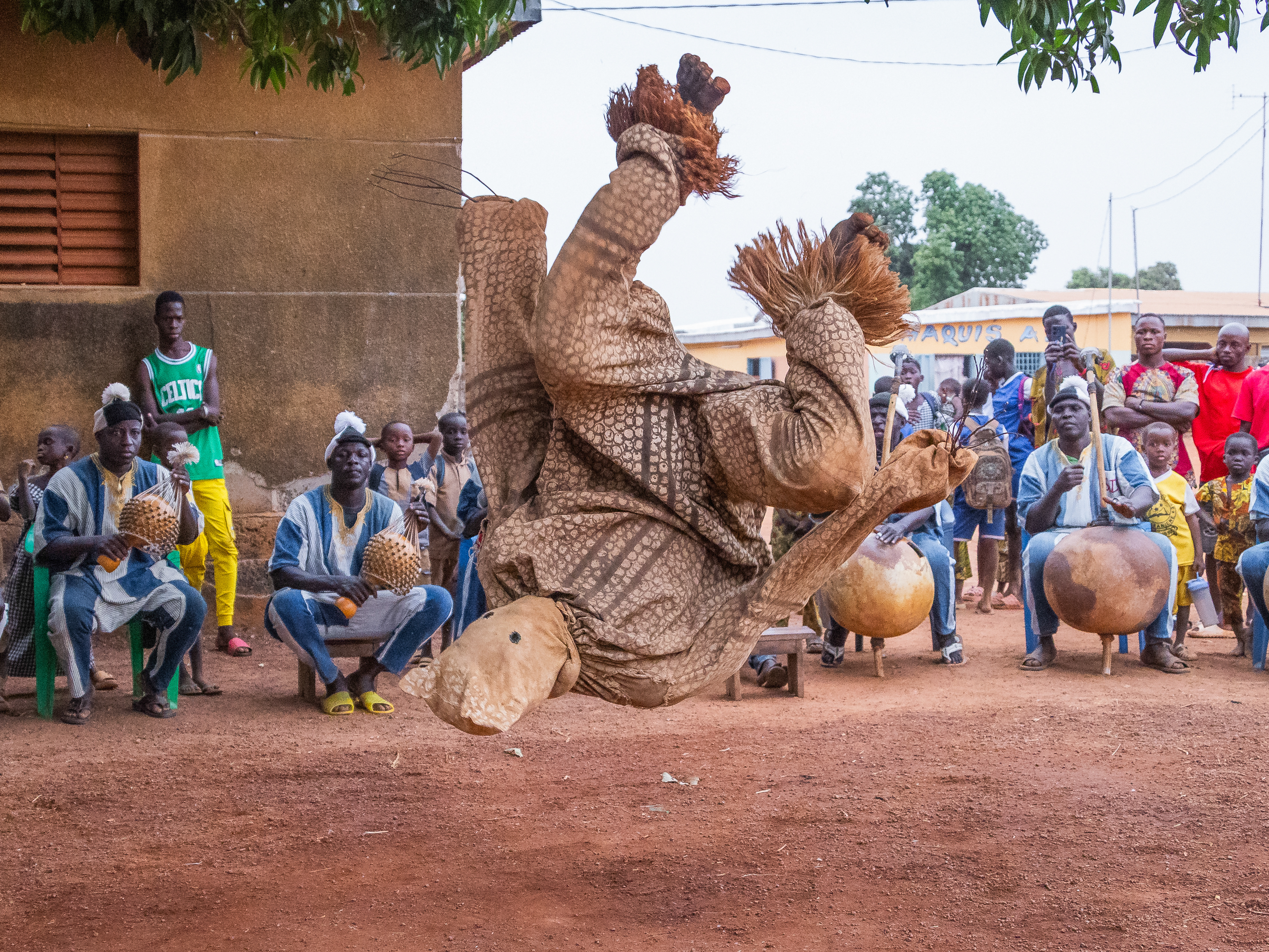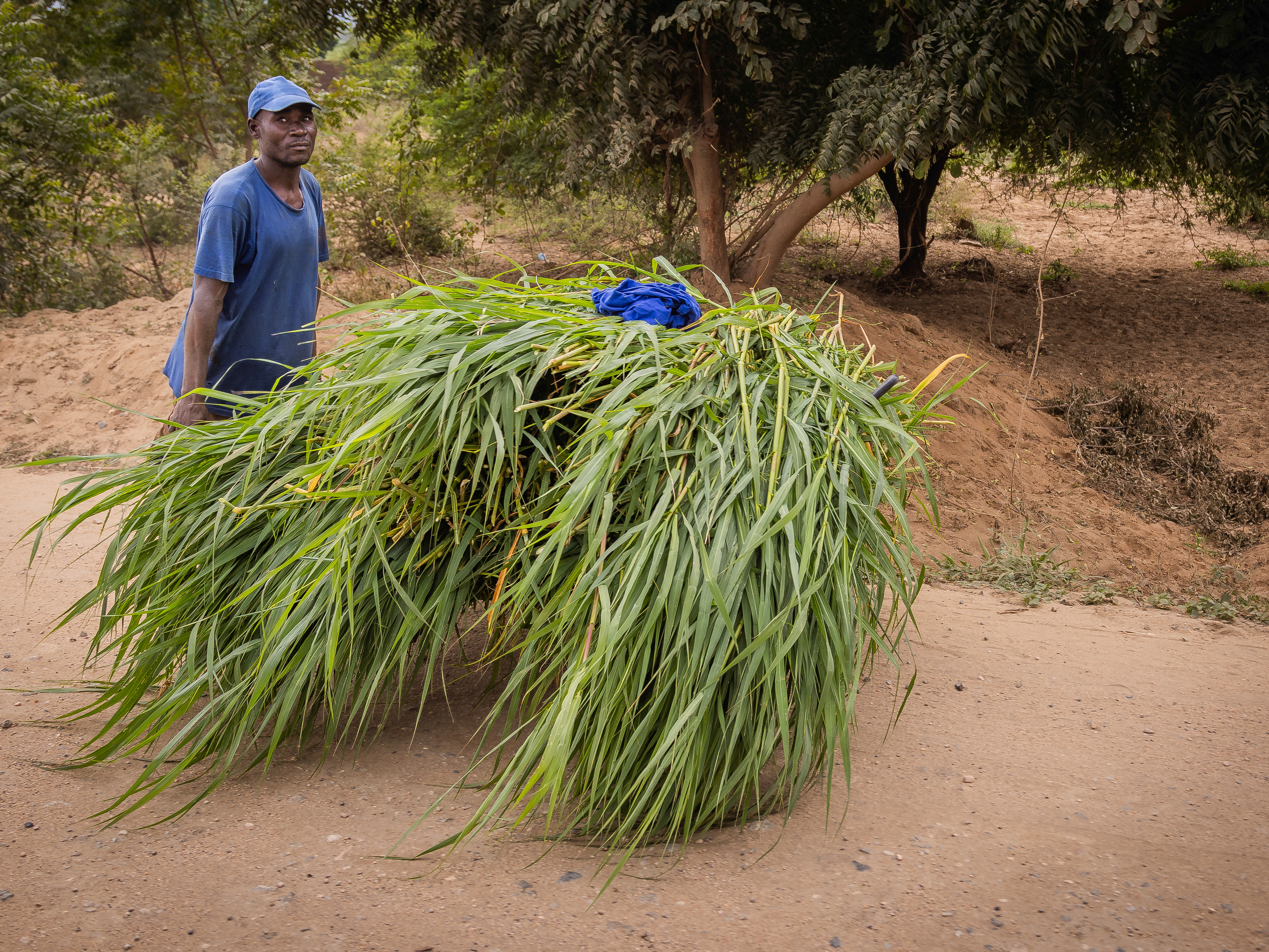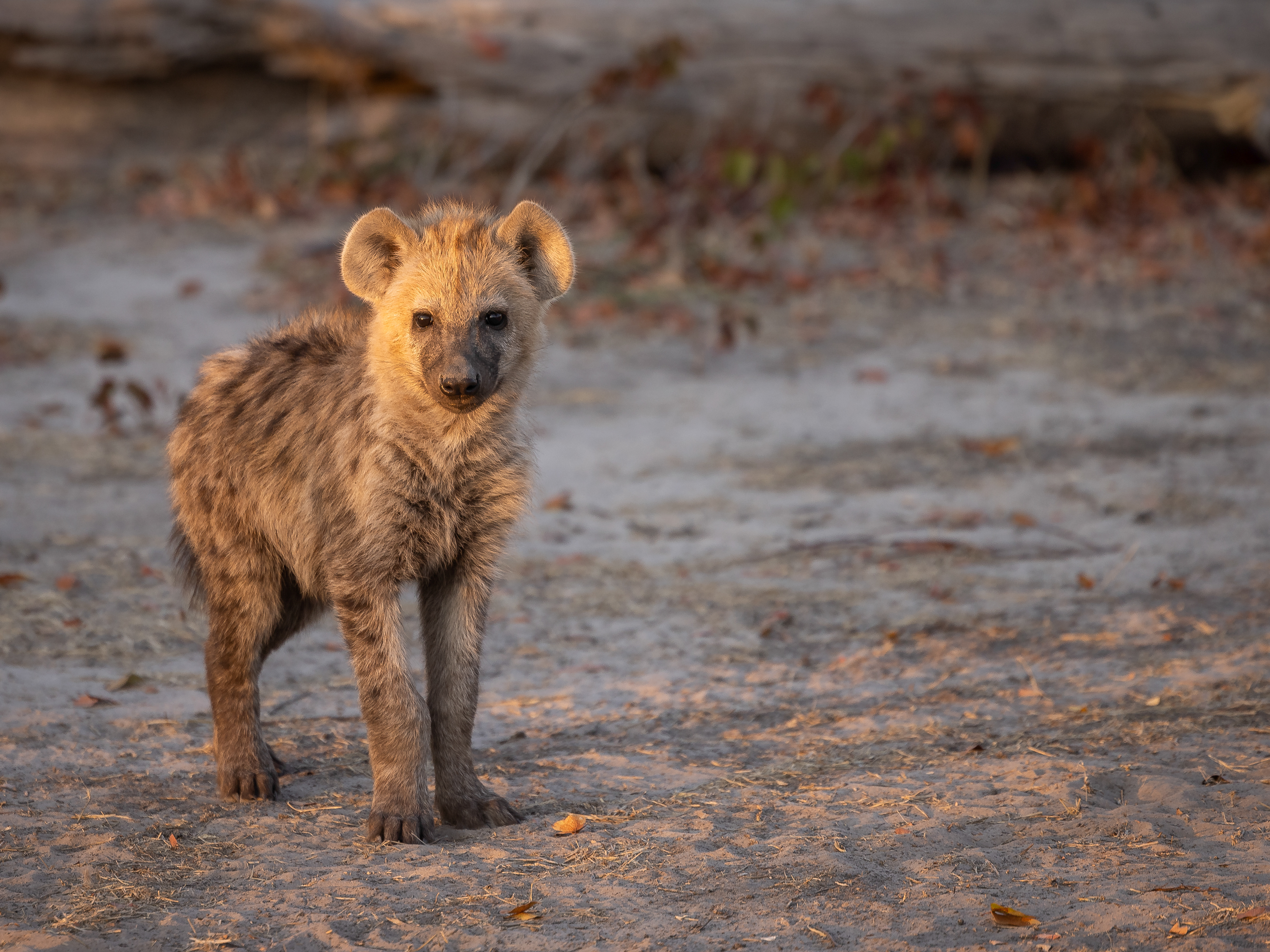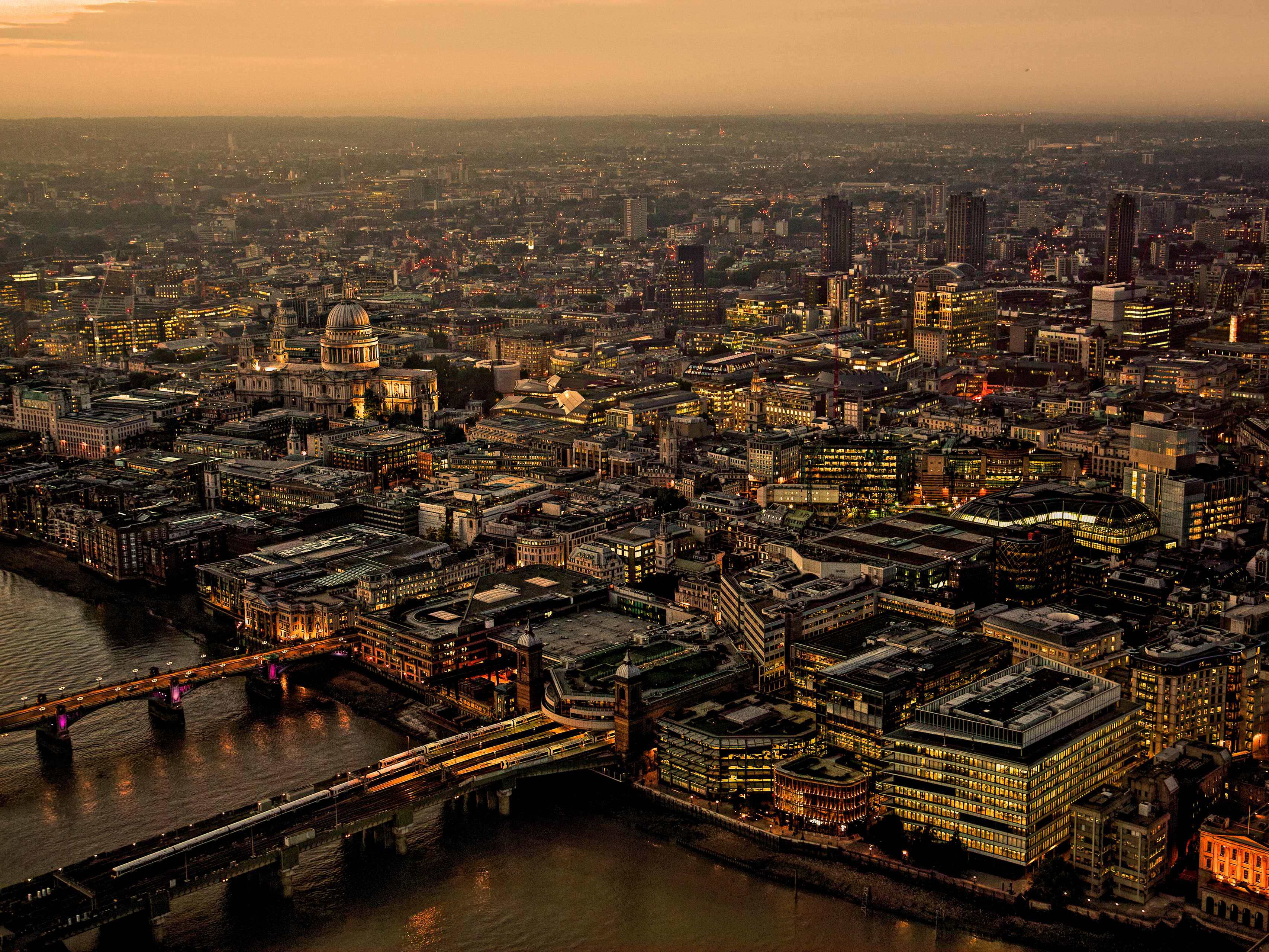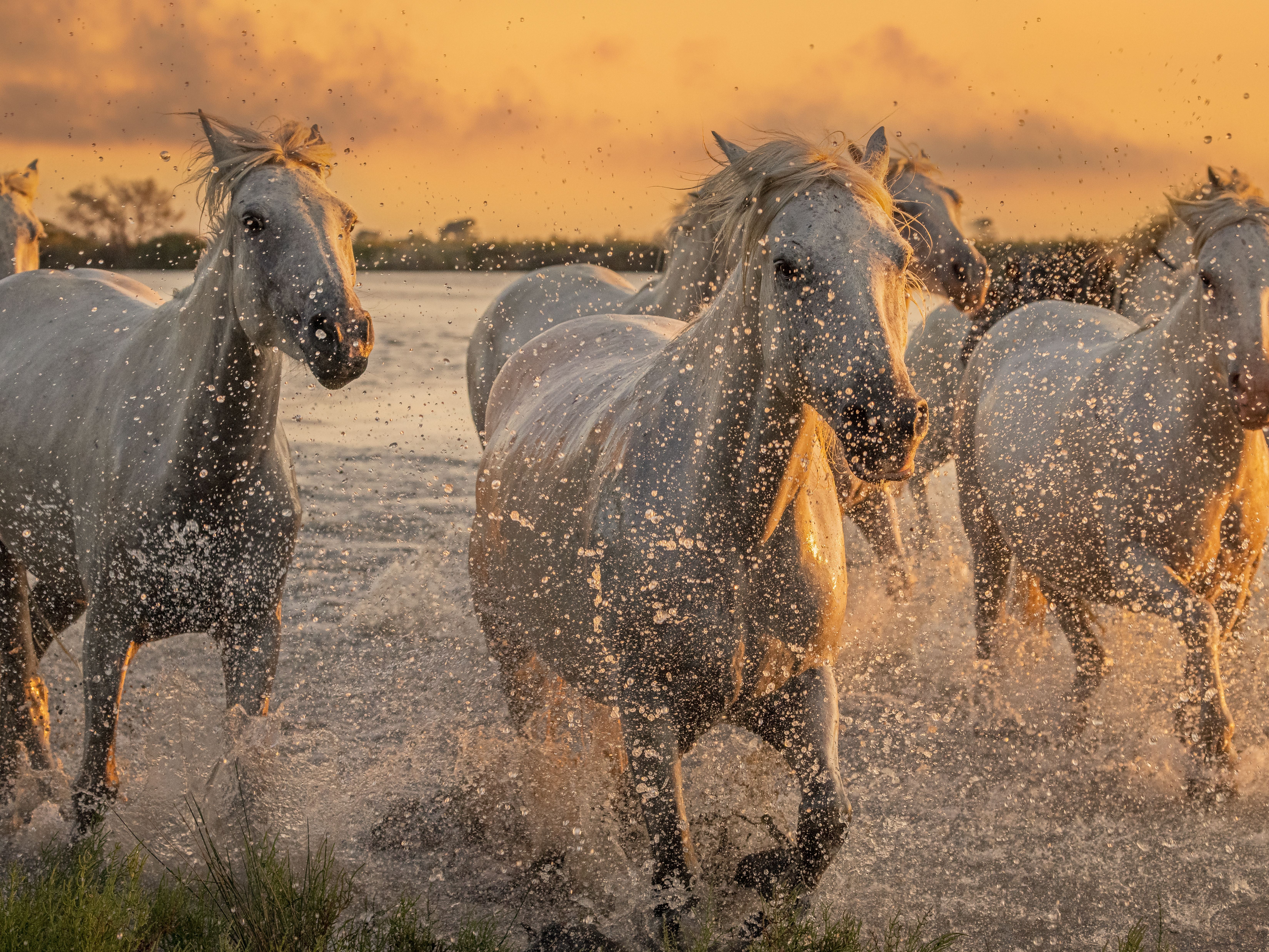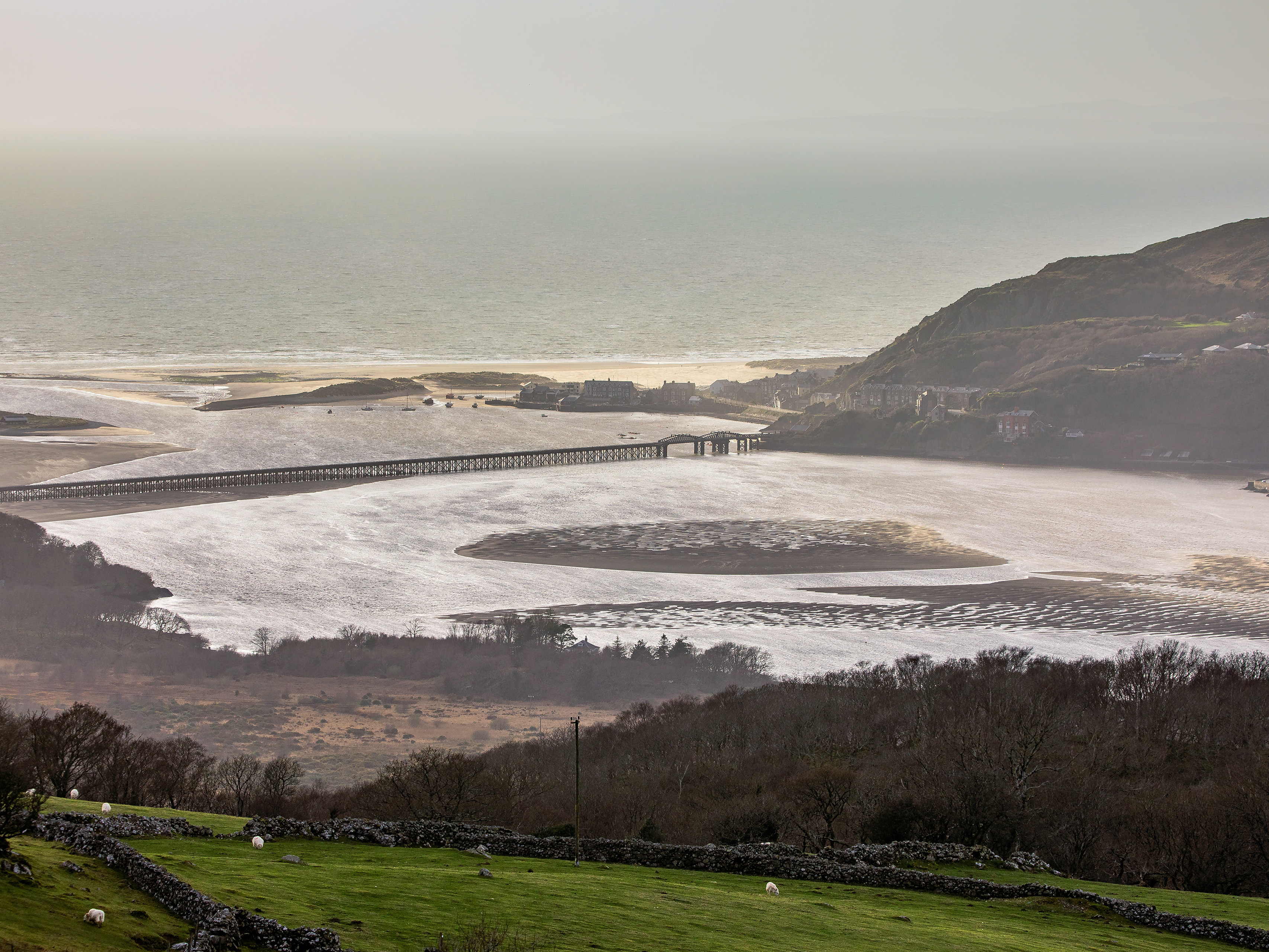Takstang Lakhang – Tiger's Nest Monastery, Bhutan, was built in 1692 at a cave where Guru Rimpoche meditated after having flown in on the back of a tigress. The cave has been considered a sacred site ever since. The monastery clings precariously to the side of a cliff at an altitude of 3,120m (10,200ft), and is reached via an 8km (5 mile) path ascending some 900m (3,000ft) from the valley floor.
Excerpts from my journal:
“It is described and evaluated as the highlight of the trip, but the prospects are not good. I am unfit, the path is steep and muddy and the altitude a hindrance. With the encouragement of my very own personal guru, Sheila, I set off at a slow speed. I am exhausted before I even reach the first flat. It seems to be never ending.
Sheila coaches me through correct breathing and walking style and encourages a positive mental attitude. After a while I slip into a kind of rhythm and speed that is right for me, and I seem to be acutely aware of my surroundings and the beauty of the mountains, rather than the arduous climb. The early morning air is fresh and cool and there is low mist hanging over the trees. Some people rush past us, but we continue at a slow, but comfortable speed. An elderly American gentleman has given up walking and a horse has been sent for, so he kindly lends me his trekking poles. They make a huge difference, and I really feel I am floating along.
Talk is superfluous and would only encumber us as we scale higher and higher up the uneven path. Blue Poppies – the national flower of Bhutan – glow in the undergrowth, whilst the Old Man’s Beard tree-moss hangs eerily from the branches partially engulfed in mist. An otherworldly atmosphere envelops us, heightened by the sight of a dog running down the path with a young pup between her teeth.
I am encouraged by the sight of a small shrine on a ledge, my eyes wandering to the sheer cliffs behind. I gasp laudably as Taktshang Lakhang comes into view where the mist is slowly clearing. The monastery is framed by clouds in such a way that makes it look like a fantasy painting – an artist’s impression of a castle in the sky. I am mesmerized. I feel as if all emotions have drained from my body and all I can think about is this magical building. I made it. The mist clears and reveals the monastery in all its glory. This is why I came. The adrenaline keeps me full of energy and I feel spiritually, emotionally and physically invigorated.”
Harbin, China. One of the most polluted cities on earth.
Inside the famous Karni Mata Temple, India
Karni Mata is a temple in Deshnok, India, dedicated to a female Hindu sage of the same name who died in 1538, aged 151 years.
From my journal:
“It is not the the intricate carvings, historical importance, nor the temple's religious significance that draws us here, it's the rats. Yes, rats! This is not the place to be if you suffer from musophobia – the fear of mice or rats – as the temple is famous for its 20,000 black rats, which are treated as sacred and given protection in the temple. These holy rats are called 'kabbas', and many people travel great distances to pay their respects. The temple draws visitors from across the country for blessings, as well as curious tourists (like us) from around the world, hoping to have rats run across their bare feet for good luck.
We remove our shoes and enter the temple, trying to keep to the coir mats laid down as a pathway. They are not comfortable to walk on, but better than the blisteringly hot marble floor. Everywhere we look there are rats. They are eating, sleeping, scurrying or just well, being rats. Under foot there is rat poo and rat food, and we have to be careful not to step on the rats themselves.
Should a rat accidentally be killed, it must be replaced with one made of solid gold. Eating food that has been nibbled on by the rats is considered to be a supreme blessing. I decide against trying it, however, for obvious reasons; although it is said that during the century of this temple's existence, there has never been an outbreak of plague or other rat-borne illness among the humans who have visited—which may be a miracle in itself.
Suddenly there is a flurry of excitement, someone has seen a white rat way down below the water tanks. Amongst the 20,000 odd black rats in the temple, there are a few rare white rats, which are revered as being especially holy. They are believed to be the manifestations of Karni Mata herself and her four sons. Spotting one of these white rats is considered a special blessing and some devotees put in extensive efforts to bring them out, offering 'prasad', a kind of sweet holy food. We are all crouching down to the floor to get a glimpse of the white rat – it looks like we will have some serious blessings today! .
Despite the vast number of rats in this temple, babies have apparently never been seen - any given day, they all are of same size, shape, weight and height.
We walk around the outside of the inner shrine – clockwise of course – and one old man is very friendly and wants to practise his two English words (and a few other words that may or may not be an attempt at English) and I am very flattered by his sincere friendliness towards foreign visitors until I feel a firm grip around my boob. Thanks for nothing mate! Give me the small furry rats any time over this human variety.
I could stay forever photographing the little furry things as I think they are seriously cute; but we have a luxury hotel with a comfortable bed, a proper bathroom, AC and the use of a swimming pool beckoning us in Bikaner, which after four nights of basic camping in the Rajasthan Desert in July, sounds like heaven.”
Thiksey Monastery, Ladakh, India
Rajjaprabha Lake, Thailand
We are met at the airport and taken to the shores of Rajjaprabha Lake, a flooded dam created to generate electricity, provide irrigation, flood control, and fishing. “You can't take those big bags across with you” the guide points out. I wish someone had told us that before we left Bangkok, as we now find ourselves on a jetty, in the pouring rain, transferring underwear and toiletries across to our rucksacks, with a small army of boatmen looking on with bemusement.
The speed boat offers no cover from the elements, and the rain hits our faces like bullets as we cross the lake. It would be a spectacular journey if we were able to keep our eyes open, with its submerged trees, ragged peaks and lush hillsides. As we approach the floating lodge, we can clearly hear the generator motors. “No generators, that is the sound of the jungle” our guide explains. Wow!
The lodge consists of five small bamboo huts on rafts, with a main dining area to one side. The long drop toilet is up a flight of wooden steps on the hillside behind, and the bath is the warm waters of the lake.
The next day we are kitted out with leech socks, and begin our trek by wading thigh deep in the river, then up into the hillside. The socks certainly earn their keep, and we should have been covered from head to toe with such protection, as the little blood suckers get everywhere. A drop of salt gets them to release their grip, but they leave behind a tiny hole which bleeds profusely. My dad looks like he's been fired on with a shot gun, his pale T shit littered with blood stains.
At one stage the path runs through grasses taller than us, and the excitement mounts as we can hear what sounds like the roar of a tiger in the distance. I turn to ask the guide about it. Where is he? And the porter carrying our lunch? The armed ranger is missing too.
Suddenly feeling rather vulnerable, we stop dead in our tracks. We call out. Nothing. We walk back a few yards to see if we missed a turning. No turnings. We call out again. Still no sign of our leaders, and the only sounds are the jungle and the aforementioned roar. After what seems like an eternity, during which we discuss what to do and if anyone can remember the way back to the lodge; the staff appear, laughing at their little trick. A huge sigh of relief goes out amongst our small group.
We have been walking for around an hour and a half or so when we have to negotiate a steep muddy slope, made treacherously slippery by the recent rain. I take small careful steps down sideways, but I can soon feel my lower foot sliding. While the right leg continues downhill, my left foot gets caught in a root on the slope. By the time I land on my posterior with an almighty thud, my leg is grossly bent out of shape, with the left ankle touching my shoulder. Ouch. Convinced my leg is broken, I try to stand up. Nothing. No pain, no problem walking. Phew.
Our destination is a huge cave, where we have the picnic lunch so lovingly carried by the porter. Amazingly, the food is still warm. My leg is beginning to hurt a little by now, so I take a rest on a rock while the others explore the cave. By the time we start the walk back to camp, I can barely put any weight on the leg, and my knee has swollen to the size of a football. Oh dear. The others lament on how they are going to get me back to the lodge, and suggestions include making a raft and floating me down the river. I choose to hobble instead.
The trek back feels a hundred times longer that it did getting there, but I do finally make it, collapsing into a chair in the dining room. We'd drunk all the “jungle juice” the previous night, so I double up on painkillers before letting myself fall onto the thin mattress on the floor in our little bamboo hut, worrying about how I am going to manage to get up again with a gammy leg.
On return to the UK, my physician confirms that I tore off the ligaments completely in my knee. It sure was one of our more adventurous adventures.
As with all balloon flights, an all terrain vehicle follows the balloon, both visually and via a two-way radio. The pilot usually tries to land somewhere with easy vehicular access, but it isn't always possible, as we found out in Vang Vieng in Laos.
It was a newly established company, and we were one of their very first flights. The morning was beautiful, with the sunrise glowing down on a heavy mist hanging low over the ground and we were flying above it. The only problem with that is that the pilot relies on sight to be able to land, and he had to go through the mist to get us down, which he did, safely; much to everyone's amazement and relief. He basically had to go down 'blind' and hope that underneath us there would be a flat, even area to land.
He had no idea where we were, however, and of course, the follow-up van couldn't keep track of us as we were travelling above the clouds. The pilot was Chinese and didn't speak any Lao, and the Lao ground staff didn't speak any Chinese. A bit of a disaster waiting to happen, really.
After a while, a peasant walked past, on her way to work the land (we were in some sort of fields). The pilot beckoned her over, and gestured that he wanted her to talk to the ground staff on the Walkie Talkie. She'd obviously never seen a balloon or a Walkie Talkie before, and much hilarity ensued.
To cut a long story short (ish), we had to walk across the field, wade knee deep through a stream, follow some sort of path around the outside of a plantation, which eventually led us to where the van and the very worried back-up staff were waiting.
Deep in a peaceful valley in the mountains of Kyrgyzstan, lies a forgotten outpost called Tash Rabat. Once part of the fabled Silk Road, there is still an ancient fortified caravanserai here: an inn that sheltered an array of merchants and travellers on their way to Constantinople and beyond.
We, however, are staying with the nomads in one of their yurts for the night, as we travel along the ancient trade route to China.
These tent-like structures are portable, round domes covered with skins or felt and are popular with the nomads of Central Asia. The buildings consist of a latticework of wooden sticks for walls, a door frame and a steam vent in the roof.
Lying at an altitude of 4,500 metres (15,000 feet), the temperature drops rapidly once the sun goes down, and we put on every single layer of clothing we brought with us; and David even borrows a thick jacket from the owner of the yurts. Our wonderful hosts look after us very well, preparing a sumptuous dinner of hearty dumplings, with the vodka flowing freely. This area was, after all, once part of the Soviet Union.
When it is time to go to bed, I am thankful that I brought a fleece sleeping-bag-liner with me, as I slip under the provided blankets, fully clothed including hat and gloves. The beds are reasonably comfortable, and I reluctantly break out of my warm-ish cocoon for a pee in the middle of the night. This involves a not inconsiderable trek across the meadow, now covered in a thin layer of snow, to the communal long-drop toilet, housed in a metal shack. Before I retire back into my sleeping bag, I check the thermometer I left outside last night: -3°C (26°F).
In winter and spring the wolves apparently come right down into the snow-covered valley at night to prey on livestock; they have been know to take 45 horses in the a single season. I saw the horses on the ridge above the camp yesterday, and am glad it is now summer.
The next morning we get up to freshly made coffee, small pancakes, home made jam and porridge; and say goodbye to our hosts as we continue on our adventure.
Spectators and photographers line up to admire the ice sculptures at Harbin's annual Ice and Snow Festival in China. It was mighty cold, at -28°C (-18°F), and I was pleased that my camera managed to stay alive at those sort of temperatures, especially as my friend's camera batteries died on him as soon as he tried to take his first picture of the display! Fortunately, after warming the battery back up again, the camera came to life enough for him to take photos until just before we were leaving. It would have been horrendous not to be able to capture this highlight!
From my journal:
“Billed as an icy, snowy Disneyland, full of fairy tales about, well, ice and snow, the festival is totally awesome and worth every minute of the long journey and every discomfort from the cold and the grotty hotel: this really should be on EVERY traveller's wish list!
The show is now officially celebrating its 30th anniversary and is by far the largest ice and snow exhibition in the world. It is commonly referred to as having four of the key “mosts” - the most art attractions, the most beautiful night views, the most recreational activities, and the most forms of entertainment.
The theme varies from year to year (this year the theme is ""Fifty Years Ice Lantern, Wonder Spread to the Whole World, Charming Harbin"), with each new event attempting to become showier, glitzier, crazier, gaudier and more extravagant, ostentatious and kitsch than the previous. Think Disney meets Las Vegas and add a sprinkling of snow. The Chinese describe it as “three-dimensional paintings, solidified notes and colourful poems”. Who am I to disagree.
Where else can you travel around the world in a couple of (freezing-your-butt-off) hours? Roman Colosseum – check. Brazilian World Cup Mascots – check. Great Wall of China – check. Empire State Building – check. Hallgrimskirkje, Iceland – check. Plus another 1500 or so more sculptures. ”
The trail through Ala Archa National Park in Kyrgyzstan follows the path of the river of the same name, meandering ever higher into the Tien Shan Mountains. My husband was striding off ahead with our Kyrgyzs guide, while I took life more leisurely, crouching down to photograph alpine flowers or experimenting with shots of the bubbling stream on a slow shutter speed.
While I was totally engrossed in the fast flowing water, a young chap came across to where I was standing, eagerly beckoning me towards a clearing in the wooded riverbank where his whole family were seated around a picnic table. None of them spoke any English. My Kyrgysz is non-existent and my Russian (their second language, a hangover from the USSR times) is not much better.
Through gesticulations and a few words of various languages, we laughed and chatted as I joined them for an 'interesting' lunch, consisting mostly of vodka and bread with a few tomatoes thrown in. When David and Nurkyz returned from their brisk hill-walk, they found me slightly tipsy and very happy, surrounded by a number of new-found friends.
It is these sort of interactions with local people that make travel so fascinating for me.
Back in 2014 we are invited to a wedding in rural Rajasthan, India. We are to stay with the groom's family in a small farming community miles from anywhere, so we are fully aware that they will be no hotel accommodation nearby. Having visited the farm a few years ago. we also know the lay-out will offer no privacy, especially as up to 200 other people will be staying for the event.
With this in mind, we decide to pack our tent, so that at least we can have somewhere private to go to change and sleep.
Wrong.
Sleeping in a tent in Rajasthan in July is like trying to sleep in a sauna. It is 40°C (105°F) during the night, so we end up with the side flap open all night to try and let some 'fresh' air in. There is quite a breeze which is not only akin to a sleeping in front of a fan heater, it also sandblasts us with the fine Rajasthani desert dust. Mind you, that is preferable to trying to rest inside the blistering heat of the furnace-like tent.
Answering the call of nature in the night is 'interesting'. In the pitch dark rural night, a torch is essential to make your way past all the sleeping bodies. The groom's family have hired 200 sleeping mats and 50 'cots' (a bed-like wooden frame with rope across – surprisingly comfortable) and everywhere you look there are bodies: on the ground, the porch, inside the farmhouse, under the animal awnings, and the flat roof. Avoiding the goats and buffalo (and their droppings), I try to locate a bucket, making sure it is the right one, not the irrigation pail with holes in the bottom as I found out the first night. Having fetched water from the well, I walk to the small out-house behind the farm building. At this stage it is preferable to switch my light off as the inside of the tiny room is decidedly more acceptable in the dark.
As I said at the beginning of this, our main reason for taking the tent with us was to provide some sort of privacy; but the locals have other ideas. Very many of the guests have come from equally small farming communities in the area, and have never seen a western person before, so we are quite a novelty. Every morning we wake up to find a crowd outside our tent, just sitting / standing there watching us. They don't flinch. They don't speak. They don't smile. Just stare.
While I am eternally grateful for the opportunity to experience a real Indian wedding in India, I have to admit that at the time it was an ordeal, rather than a pleasure.
Many moons ago we went hiking in the rainforests of Borneo, where insects and leeches were rife. We'd come prepared with leech socks that go over the bottom of your trousers to prevent the blighters climbing up your legs, and felt pretty sure we'd managed to avoid them.
Back in the small wooden chalet that was our accommodation, we discovered a very full and happy bloodsucker when we were getting changed to go to lunch. David very kindly took it outside and threw it into the bushes as far away from he chalet as he could, and we didn't think any more of it.
Until we were sitting in bar with a drink. My mum leant over to me and whispered, in fits of giggles: “has David started his period?”
Between howls of breathless laughter, I tried to explain to David – who was by now getting paranoid as he had no idea what was going on – that his lovely white shorts had a massive blood stain in the crotch.
A quick exit back to the room revealed that the bloated leech we saw earlier, was in fact full of David's blood – it had missed his vitals by around a quarter of an inch.
One of the things about leeches, of course, is that they inject an anticoagulant when they bite you, in order to keep the blood flowing. And it did. And did. And did some more. After trying plasters, bandages, and cotton wool attached by DUCT tape, David finally wore one of my sanitary towel when we went back to the restaurant.
Complaining about how uncomfortable he was, my mum and I were unable to stop laughing long enough to have any sympathy for his predicament.
Mount Merapi on Java Island, is the most active of Indonesia's 129 volcanoes, with a large eruption occurring just a couple of months prior to our visit in 2006. This was followed by a massive earthquake just 50kms away which killed more than 5,000 people and made 200,000 homeless.
We were on a day trip to Java from Bali, and had hired a car and driver from the airport to show us the UNESCO sites of Borobodur and Prambanan; and using sign language the driver (who spoke no English) asked if we wanted to see the active volcano or go shopping.
As non-shoppers, we obviously chose the volcano, and found it exhilarating and terrifying in equal measures being this close to a still-smoking active volcano.
A few years ago we toured through Bangladesh and stopped at a banana market amongst other places. With tourism being almost non-existent, we were as much of an attraction to the local people as they were to us. Everywhere we went, a large crowd gathered around us, gawping and pointing.
I love interacting with the locals when we travel, so I decided to take part in the work at the market, carrying bananas from the truck to the stalls. As you can see, my actions caused heaps of hilarity amongst the traders – our local guide suggested I'd be the talk of the village for months to come, as he'd never before known a tourist to join in like that.
It was bloody hard work - I never realised just how heavy a bunch of bananas are!
Obviously I didn't take the photo, it is a frame-grab taken from David's video, hence the poor quality.
Longji Rice Terraces, China
Pushkar Camel Fair
Each year around the full moon in the Hindu lunar month of Kartik, which usually falls in November, the small Rajasthani town of Pushkar in India attracts thousands of camels, and their handlers / prospective buyers, who converge for the world's largest camel fair.
Apart from the trading of livestock, it is an important pilgrimage season for Hindus to the Pushkar lake. The fair also celebrates the importance of camels in the life of Rajasthani people.
We arrived towards the end of the five day festivities and I was initially somewhat disappointed, as most of the parades and competitions (camel beauty pageant anyone?) had already taken place, and I found the camel area far too crowded to take decent photos.
On the very last day we went for a walk in the late afternoon, and I couldn't have been more delighted by what greeted us: many of the camels had already left, thinning out the crowds, and the departing camels were stirring up the dust in the setting sun.
This is exactly what I came here to photograph!
While visited the fishing village of Tai O on Lantau Island off Hong Kong in 1992, we were asked by a lady in a rowing boat if we would like a water-based tour of the area. It wasn't until she stood up and got out of the boat at the end of the tour that we realised just how small she was. Fortunately she was just as amused by the height difference as we were, and this picture always makes me smile.
PS: I am particularly tall (6'1”) and she was exceptionally short, yet she manually and singlehandedly propelled the boat and us around the stilted village.
Worshippers pray at the Cao Dai Temple in Vietnam.
The Cao Dai religion is unique to southern Vietnam and was established in 1926, and is a fusion of Buddhism, Christianity, Taoism, Confucianism, and Islam. Followers are expected to participate regularly in worship services, practice vegetarianism at least ten days per month, purify their body and spirit and avoid killing living beings.
The people clad in white in the image are lay followers, the brightly coloured robes are men with the rank of priest and higher, with the colour reflecting their spiritual allegiance: yellow (symbolizing Buddhism and virtue), blue (Taoism and pacifism) or red (Confucianism and authority).
Both the exterior and interior of the temple are extravagantly decorated, incorporating symbols, abstract designs, and images of saints. The high ceiling is painted sky-blue with fluffy clouds and the 28 dragon-encrusted columns that run the length of the nave, represent the 28 manifestations of the Buddha. Seven-headed cobras symbolise the seven human emotions.
In 2006, we sailed around Nusa Tenggara, a collection of Indonesia Islands east of Bali, in a traditional eight-berth Indonesian phinisi sailboat called MV Katarina.
Kuangsi Waterfall, Laos
Arirang is a gymnastics and artistic festival, known as mass games. This immense extravaganza consists of 100,000 performers, perfectly choreographed in a 90-minute display of gymnastics, dance, acrobatics, and dramatic performance, accompanied by music and other effects. The performance also features the 'largest picture in the world' a backdrop of a giant mosaic of 25,000 individual students each holding a book whose pages links with their neighbours’ to make up one gigantic scene. When the students turn the pages, the scene or individual elements of the scene change. Up to 170 pages make up one book.
May Day Stadium, Pyongyang, North Korea
